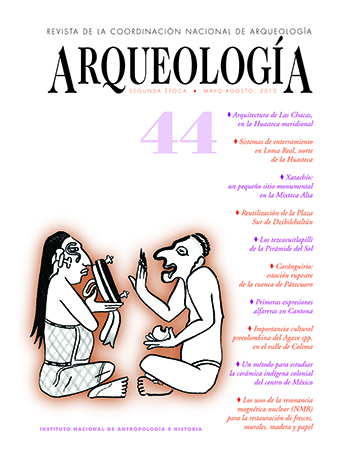The nuclear magnetic resonance (NMR), a new technology for the restoration and preservation of the artistic and cultural heritage: some examples of application in frescoes, wall, wood and paper.
Published 2010-08-01
How to Cite
Abstract
Humankind’s cultural heritage is unique and consists, amongst others, of murals, frescoes, works of wood and monuments. For their restoration and conservation, non-invasive, rapid and precise study methods are required to evaluate the nature and extent of their deterioration. Various methods —invasive and non-invasive— have been used internationally including thermography, electric resistivity/conductivity and acoustic or ecospectrographic methods for the former; microwaves, neutron radiation, Gamma transition, Ground-Penetrating Radar (GPR), Fourier transform(FT) infrared thermal imaging, and Nuclear Magnetic Resonance (NMR). NMR, according to various case-studies has proved to be the most versatile for the conservation of cultural heritage, e.g. in the restoration of frescoes, paintings and ceramics; to measure moisture content in wood and characterize fluid distribution in rock samples, paper documents, leather or textiles as well as to assess the penetration depth and distribution of hydrophobic products used in consolidation treatments. One additional advantage of NMR is its portability, allowing measurements to be done in situ, whether in museums, libraries or files without having to move any material and with no side-effects whatsoever. For all the reasons stated above, the use of Nuclear Magnetic Resonance would present numerous benefits for INAH, in supporting restoration tasks which require knowledge of moisture distribution and hydrophobic products penetration as well as in investigating new applications related to the conservation of cultural heritage.

